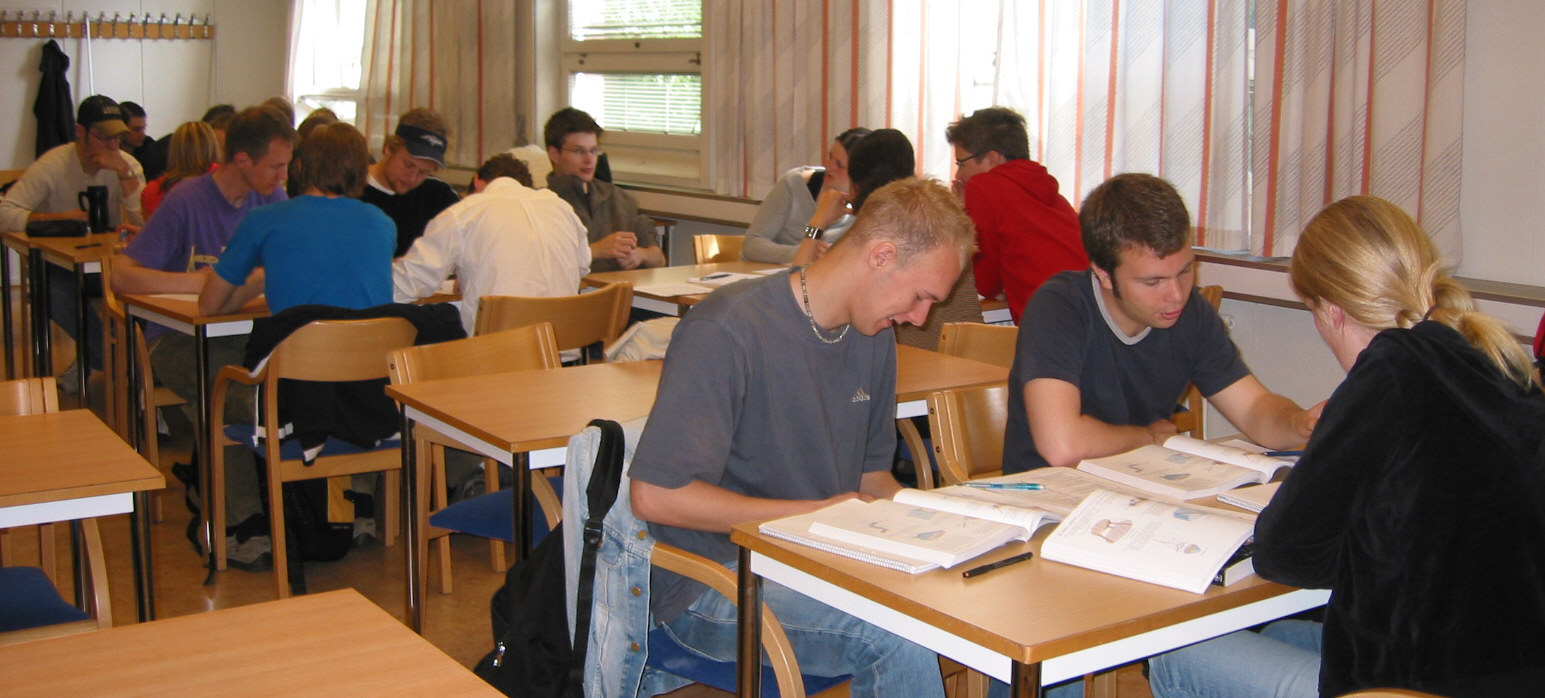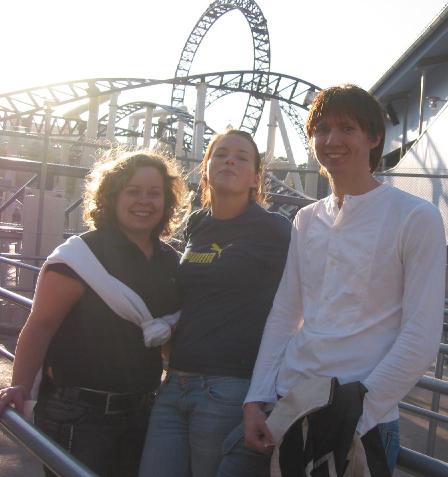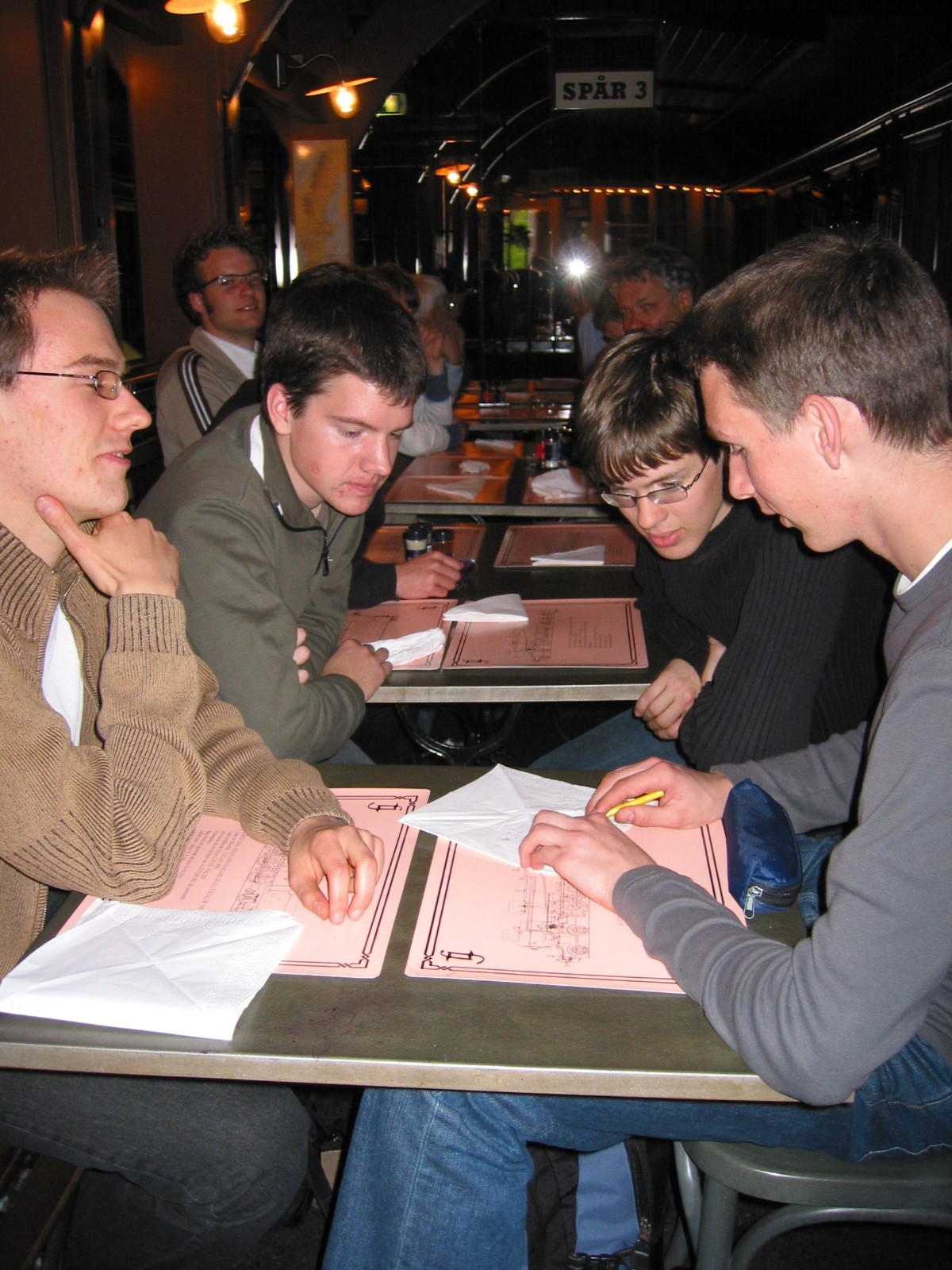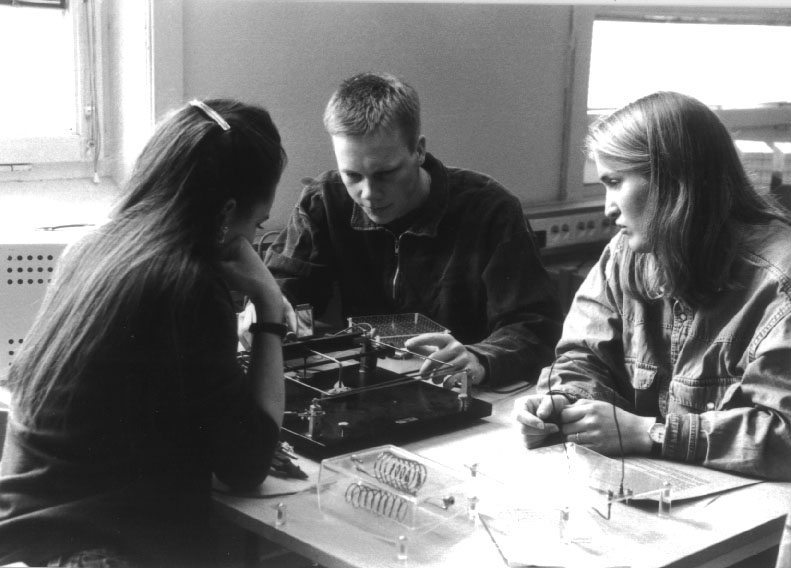
Students learn about concepts, principles, procedures by encountering them in some different situations ( problems, cases etc) during their studies at University and they are supposed to make use of them subsequently, in working life, in different situations. Handling contextually novel situations by means of what you have learned earlier, in other kinds of situations, might happen thanks to "transfer". The likelihood of transfer is considered to be a function of similarity between "old" and "new" situations.
In my presentation I will, however, argue that transfer is very much a function of variation (differences) within "old " situations, within "new" situations, and between "old" and "new" situations. The effects of teaching Has thus very much to do with the relationships between problems, cases etc that the teacher invites the students to deal with.
The instruction we offer students, at any level, presumably reflects what we believe will help them learn. Physics education reform has raised the profile of students' conceptual understanding as a focus for our attention: If we want to help students learn, we need to pay attention to what they already understand, about forces and motion, heat and temperature. As important, we need to pay attention to what students understand about knowledge and learning, in other words their intuitive "epistemologies": What do they think constitutes knowledge, and what do they think they should be doing to develop it? Too often, students think they should be memorizing equations, and that they should not be consulting their experience of the physical world. This talk will focus on how to tap into students' resources for more productive engagement.
In response to the major new discoveries in physics during the 20th century, the way practicing physicists think about physics has itself evolved. The quest for simplicity and unification became the major emphasis of the physics enterprise in the past century. For example, the Standard Model was constructed as scientists tried to organize and make sense of the flood of new particles discovered; the unification of the electromagnetic and weak interactions came as theorists tried to find a simple model to explain what appeared to be a large number of disparate interactions.
Also during the past century, psychologists and education researchers have shown that a hierarchical organization of knowledge is efficient and robust, and simplifies the search process inherent in recalling information and solving problems. However, the traditional introductory physics course taken by thousands of science and engineering students each year has in many ways lagged behind both physics and cognitive science. In this traditional course, students are asked to memorize solutions to a large number of standard problems (such as problems involving constant acceleration), and to practice matching new problems to memorized solutions. Cognitive scientists have also shown that causal, runnable mental models are easier to reason with than are abstract constraint-based models; in physics, runnable mental models frequently require atomic-level models of matter developed during the 20th century, that are rarely included in the traditional course.
Reorganizing the introductory curriculum along the lines of 20th century physics is more authentic to the contemporary physics enterprise, and also can lead to significant cognitive benefits for students. Emphasizing that instead of dozens of formulas, there are a very small number of truly fundamental physics principles, and teaching students how to reason from these principles, can lead to more coherent and effectively organized knowledge. Stressing atomic-level models of matter, and micro-macro connections, removes some of the mystery by helping students acquire a sense of mechanism.
We will describe a modern introductory physics curriculum,
Matter and Interactions
that engages students in activities central to physics:
attempting to explain and predict a broad range of natural phenomena by
starting from a very small set of fundamental principles, combined with
microscopic models of matter. Measures of the effectiveness of this
approach will be presented.
Plenary presentations
The primary goal for courses and study programs is for students to gain skills and competences preparing them for their future professional careers. However, many courses still use only traditional forms of examination such as written examinations, mainly designed to test the students acquired knowledge. In this presentation, an advanced interdisciplinary course on the role of physics in biology will be described. A central aim with this course was to familiarize the students with professional scientific culture. This was done through an examination process including tasks such as paper writing, peer reviewing and active participation in an examination conference.

In our program at Lund University the first year physics course is a one semester full time course. Advantages of this program will be discussed. The term concludes with an experimental seminar course that runs for 7 days of full time work for the students. Here the students decide on an experimental topic and work in pairs coached by three instructors. In the course the students learn how to develop an experiment of their own design. They learn about the methodology of research and how to proceed when something goes wrong. The course process and samples of student projects will be presented. This popular course provides a way for students to really feel that they are a part of the Physics Department.
In physics education, experiments which confirm already known theory or theoretical prediction are quite frequent. In particular, advanced student laboratories are very often reproductions of historically significant precision experiments. However, the impact of and motivation of such experiments is not often discussed in the educational and pedagogical literature. We propose here that precision experiments and measurements, which confirm theory, have an important role as professional verification procedures and demonstrating the validity of knowledge. These views are embodied by the argumentation structure supporting Einstein equation as exemplified by Robert Millikan's experiment on photoelectric effect and its modern student laboratory versions. The argumentation structure and role of measurements in Millikan's work are compared with argumentation structures found by analysing students' reports on photoelectric effect. The results show that in best cases students have learned to construct verification procedures, so that argumentation is supported by measurements. However, many schemes are found severely deficient, which correlates with poor handling of the apparatus and measurement data. Whether this is due to deficient understanding of the importance to construct argumentation schemes and role of measurements in it, or just a consequence of lack of skills is discussed.
I will talk about how we use video in different ways in the physics education at Västerhöjdsgymnasiet in Skövde. Video clips of an experiment can be synchronized with sensor data collected simultaneously. For example, a video from inside an amusement park ride can be shown while graphing the variations of acceleration and altitude. It is also possible to extract quantitative data from the video, which can be used e.g. while discussing two dimensional motion. Students can use an inexpensive digital camera to take a video clip of a jump from a diving board. Using video analysis, the position of the student as a function of time can be extracted. The x, y positions are recorded and velocity and other quantities can also be calculated. The response from the students to this type of analysis has been very positive. In particular female students get much more involved when using the computer as a measurement interface. Since students are familiar with computers, the focus shifts from the measuring instrument to discussions of the physics involved.
We all use different modes of representation in our teaching, but do we do it in a way that systematically helps promote the possibility of learning? In this talk a model of "modes of representation" will be presented with the aim that we, then, use this model as a starting point to discuss the question, 'Is there a necessary constellation of modes of representation that we need to use in our teaching in order for students to gain access to the kind of holistic understanding that we would like them to achieve?'
By representations I mean those semiotic resources that have been designed specifically to convey ways of knowing science. Modes of representation would then be things like images (e.g. graphs and diagrams), mathematical formulations, apparatus, experimental work, spoken language, written language, working practices etc
The use of computers and simulation environments in physics education opens possibilities for students to model complex physical systems and to develop numerical approaches to problem solving. In this study second-year university students model and create their own simulations of physical systems using the problem solving environment Matlab. The assignment used in the study concerns modeling with particle-spring systems, a model system of fundamental importance in science. The research questions concern what the students actually are learning, how they use their knowledge and how it is related to their beliefs about physics.
VPython is an ideal programming language for introductory physics
courses: it is simple enough for those least familiar with computing
and rich enough to keep very advanced students challenged. At the
Niels Bohr Institute (the physics department of the University of
Copenhagen) we use VPython both to simulate simple experiments
performed by students (projectile motion and harmonic oscillator) as
well as to illustrate phenomena not immediately accessible in the
laboratory (special relativity and gravition). I will discuss both
how VPython has been implemented in these labs and future plans for
including VPython throughout the curriculum as a programming tool.
Invited, Friday
Physics education research (PER) is becoming established within the physics community. The involvement of physicists in what was long the exclusive province of education departments both reflects and contributes to important progress. I will review near-term, practical benefits of these past 20 years of PER, in materials and approaches that are not quick fixes or easy to implement but that can lead to dramatic, demonstrable improvements to physics instruction. I will also discuss prospects for the long-term.

I have also suggested group members./Ann-Marie
Margareta Enghag, Vidar Frette,
Gunnar Jonsson,
Anne-Sofie
Mårtensson, Helge Strömdahl, Olle Östklint
Dialogic inquiry in the physics classroom
Margareta.Enghag@mdh.se
An inevitable part of teaching for meaningful learning of scientific knowledge is a shift between different communicative approaches. I draw upon a framework for analyzing the discursive actions of science classrooms, by Mortimer & Scott (2003), to elucidate and exemplify authoritative and dialogic discourse in the physics classroom. I discuss how small group work give opportunities for exploratory talks between students, and how student - student interaction open up for different communicative approaches, especially dialogic interaction. Conversations during interviews with aeronautical engineering students give examples of conversation chains I-R-P-R-P initiation-response-prompt-response, in contrary to the more common I-R-E, initiation-response-evaluation. Results show how students' interests of physics depend on the learning environment. Some ideas for "the turning point" when the teacher argues for the scientific view are high-lighted, and how this moment can be the starting point for a dialogic inquiry.

The basic course in electromagnetism is considered to be difficult by many students as it is their first contact with mathematical physics. As a remedy the course has been modified and the scope of the examination has been changed within the same curriculum. New elements are 2D and 3D calculations of electric and magnetic fields by using MATLAB (equivalent). By 'continuous' examination it was possible to follow the improvements of the students and to give them a prompt feed back.
The result of the modification is, beside a substantial increase in feed through, that the students are familiar with 2D and 3D field calculations using computers systematic and structured programming and problem solving how to make sure that their solutions are reasonable and correct
The standard method of introducing magnetism in Physics Education at all levels is questioned. By using the interaction between a permanent magnet and iron fillings as the starting point, one differs profoundly in pedagogy with previously introduced physics, thereby complicating for students to follow the main thread in physics. Before magnetism, physics is introduced through the concept of basic forces, such as mechanical, gravitational and electric. There is no reason to depart from this thread in case of magnetism. We will show that all of the standard objectives can be achieved by starting from the basic magnetic force, that is the interaction between parallel current-carrying conductors, a phenomenon that can be easily observed and measured.
In physics teacher education we use graphical networks to represent the connectivity of physics concepts and laws in different subject areas of physics. The motivation to use networks is based on the assumption that drawing networks helps students to reflect their own ideas about the relations between concepts. There has been thus far very little research-based evidence of how good structure is actually recognized and characterized, and how it is related to the content of the networks. In this study, we have carried out a structural analysis of networks produced by physic teacher students on a topic of electrostatics. The structural analysis is based on analyzing the networks as graphs consisting of vertices (concepts or laws) and edges (links). This analysis reveals hidden hierarchies and the connectivity of the map. Even the best networks made by students lack the complexity and richness found in expert networks. The results show that it is possible to recognize and characterize good structural features, but not all of them are connected with good content. For example, in many networks there is hierarchical ordering but with respect to a concept (vertex), which is not well motivated from the physics point of view. There is thus need to reconsider how the structure and graphical outlook of networks is interpreted and related to the content of the networks.